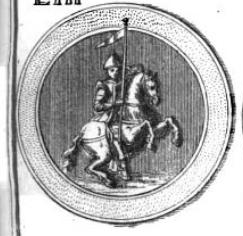
The County of Hainaut, sometimes spelled Hainault, was a territorial lordship within the medieval Holy Roman Empire that straddled the present-day border of Belgium and France. Its most important towns included Mons, now in Belgium, and Valenciennes, now in France.
John II was Count of Hainaut, Holland, and Zeeland.

Guy of Dampierre was the Count of Flanders (1251–1305) and Marquis of Namur (1264–1305). He was a prisoner of the French when his Flemings defeated the latter at the Battle of the Golden Spurs in 1302.

Charles was the duke of Lower Lorraine from 977 until his death.
Albert I the son of Robert I, was a count who held the castle of Namur and a county in the Lommegau. His county came to be referred to as the County of Namur in records during his lifetime.

Godfrey I, called the Bearded, the Courageous, or the Great, was the Landgrave of Brabant, Count of Brussels and Leuven (Louvain) from 1095 to his death and Duke of Lower Lorraine from 1106 to 1129. He was also Margrave of Antwerp from 1106 to his death.
Gothelo, called the Great, was the duke of Lower Lorraine from 1023 and of Upper Lorraine from 1033. He was also the margrave of Antwerp from 1005 and count of Verdun. Gothelo was the youngest son of Godfrey I, Count of Verdun, and Matilda, daughter of Herman, Duke of Saxony. On his father's death, he received the march of Antwerp and became a vassal of his brother, Godfrey II, who became duke of Lower Lorraine in 1012. Gothelo succeeded his brother in 1023 with the support of the Emperor Henry II, but was opposed until Conrad II forced the rebels to submit in 1025. When the House of Bar, which ruled in Upper Lorraine, became extinct in 1033, with the death of his cousin Frederick II, Conrad made Gothelo duke of both duchies, so that he could assist in the defence of the territory against Odo II, count of Blois, Meaux, Chartres and Troyes. It was during this time 1033-1034, that Gothelo clashed with Baldwin IV, Count of Flanders, concerning the march of Ename.

Godfrey II (965–1023), called the Childless, son of Godfrey I, Count of Verdun was the first of several members of his family to become duke of Lower Lorraine which roughly corresponded to modern Belgium, southern Netherlands, and the northern part of the German Rhineland.
Richilde, Countess of Mons and Hainaut, was a ruling countess of Hainaut from c. 1050 until 1076, in co-regency with her husband Baldwin VI of Flanders and then her son Baldwin II of Hainaut. She was also countess of Flanders by marriage to Baldwin VI between from 1067 to 1070. She ruled Flanders as regent during the minority of her son Arnulf III in 1070–1071.

Henry the Blind, sometimes called Henry IV of Luxembourg, was his father's heir as Count of Namur from 1136 until his death, and heir of his mother's family as Count of Luxembourg from 1139 until his abdication in 1189. He also inherited the smaller lordships of Longwy, La Roche-en-Ardenne and Durbuy.
Count Lambert "the Bearded" was the first person to be described as a count of Leuven in a surviving contemporary record, being described this way relatively late in life, in 1003. He is also the patrilineal ancestor of all the future counts of Leuven and dukes of Brabant until his descendant John III, Duke of Brabant, who died in 1355.
Giselbert van Loon is the first definitely known count of the County of Loon, a territory which, at least in later times, roughly corresponded to the modern Belgian province of Limburg, and generations later became a lordship directly under the Prince-bishopric of Liège. Very little is known about him except that he had two brothers, one of whom, Bishop Balderic II of Liège, is much better attested in historical records.
Henry II (1206–1229) was the margrave of Namur from 1226 until his death.

Albert III was the Count of Namur from 1063 until his death. He was the son of Count Albert II and Regelinde of Verdun.
Albert II of Namur was Count of Namur from the death of his elder brother Robert II to his death in 1067. They were the sons of Albert I, and Ermengarde, daughter of duke Charles of Lower Lorraine.
Otto II, Count of Chiny, son of Arnold I, Count of Chiny, and Adélaïs.
Herman of Ename, was a count in what is now Belgium, who was responsible to the emperor for holding the frontier fort at Ename in the Pagus of Brabant, which faced the County of Flanders in the Kingdom of France.
Lambert, Count of Montaigu and Clermont, son of Conon, Count of Montaigu. Lambert was also Seigneur de Rochefort, Advocate of Dinant, and Advocate of Saint-Symphorien-des-Bois.
The Battle of Bar-le-Duc was a confrontation between two feudal armies led by Odo II, Count of Blois, and Gothelo I, Duke of Lorraine, that took place on 15 November 1037 outside Bar in the Duchy of Lorraine.






